If you thought India only has the rich and varied cultural heritage to offer, then think again. Mother Nature has been generous enough on India to bless her with some of the most amazing landscapes. The UNESCO, a specialized agency of the United Nations, has a list of 1092 (as of 2016) sites, such as forest, mountain, lake, desert, monument, across the world which UNESCO considers is in the interest of international community to preserve each sites.
These are the places of natural or cultural heritage. As of 2014, India has 32 sites listed as World Heritage Sites, of which 25 are cultural and other 7 are natural sites. India with its rich biodiversity and great wildlife heritage has these natural World Heritage Sites which should be on itinerary of any nature lover and they are,
Contents
- 1) Great Himalayan National Park
- 2) Kaziranga National Park
- 3) Keoladeo National Park
- 4) Manas Wildlife Sanctuary
- 5) Nanda Devi and Valley of Flowers National Park
- 6) Sundarbans National Park
- 7) Western Ghats
- FAQs on UNESCO Natural World Heritage Sites In India
- The Amazing Dozen: 12 Adventures in India and where to do it - Part 1
- Top 10 Things To Do in Lakshadweep
- 15 Offbeat Restaurants in Goa: Unique Places to Eat in Goa
- 12 Festivals in India You Won't Want To Miss
- 20 Best Road Trips in India That You Must Take Once
- 10 Most Scenic Hill Stations in South India
- India’s most visited place is not the Taj Mahal!
- Top 12 Things To Do in Goa
1) Great Himalayan National Park
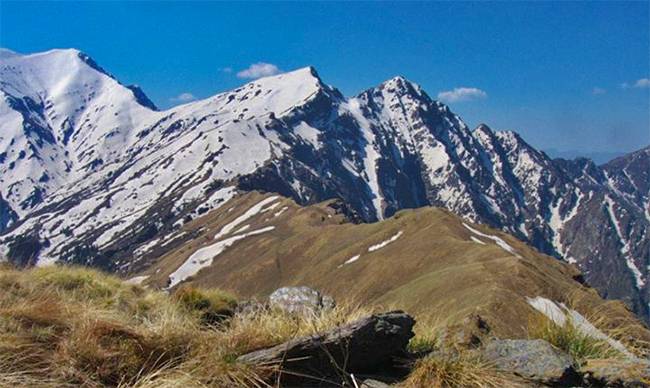
source: flickr.com/photos/com4tablydumb/8780203396
Built in 1984, spread over an area of 1,171 square km and characterised by high alpine peaks and meadows, the Great Himalayan National Park was declared a World Heritage site in 2014. The Great Himalayan National Park is home to hundreds of flora and over 375 fauna species including mammals, reptiles, amphibians, birds and insects which are protected under the strict guidelines of Wildlife Protection Act, 1972 and hence, hunting is prohibited.
The UNESCO World Heritage Site Committee granted the status to the park under the criteria of “exceptional natural beauty and conservation of biological diversity”.
2) Kaziranga National Park
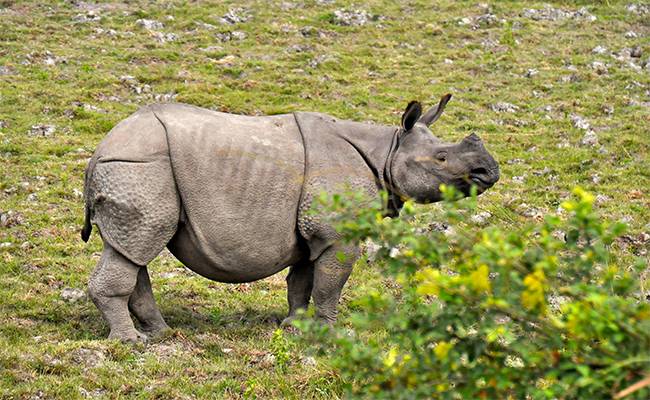
source: flickr.com/photos/scott1723/14211030355
Situated in the north-east state of India, Assam, Kaziranga National Park is inhabited by the world’s largest population of one-horned rhinoceros. The Park, which was declared a World Heritage Site in 1985, also boasts of the highest density of tigers among protected area and was declared a Tiger Reserve in 2006.
Least disturbed by human presence, the Park is also home to various animals like elephants, wild water buffalo, and swamp deer. Kaziranga is also recognized as an Important Bird Area by Birdlife International for conservation of avifaunal species.
3) Keoladeo National Park
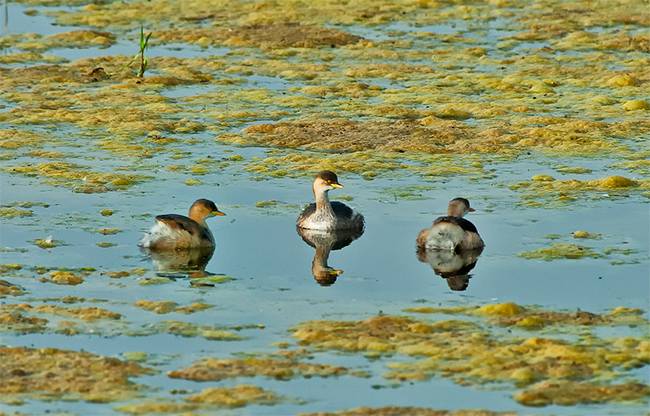
source: flickr.com/photos/hoppy1951/7413828164
Situated in Bharatpur, Rajasthan, Keoladeo National Park, formerly known as Bharatpur Bird Sanctuary, is home to over 360 species of birds. A protected sanctuary since 1971, Keoladeo National Park was declared a World Heritage site in 1985. Birds from lands as far as Afghanistan, Turkmenistan, China and Siberia flock this man-made, man-managed wetland which was a duck-hunting reserve for the Maharajas.
Because of its strategic location, thousands of birds migrate here during the winters and the park was the only known wintering site for the critically endangered Siberian Crane. This is the only park in India that is enclosed by a 2 meters high boundary wall which minimizes possibilities of encroachment or biotic disturbances.
4) Manas Wildlife Sanctuary
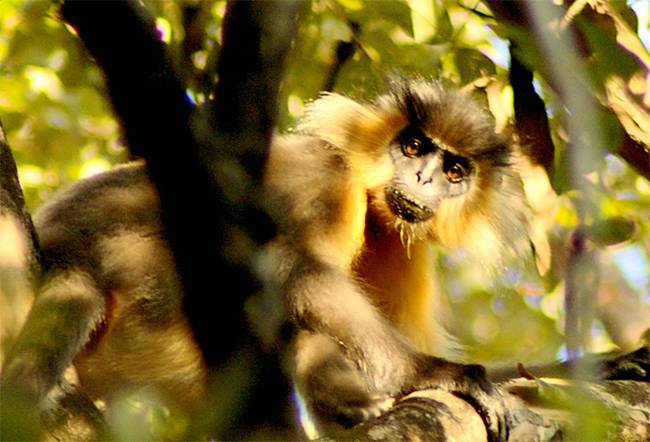
source: flickr.com/photos/pankaj/2121706951
Located in the foothills of Himalayas in the north-eastern state of Assam, Manas National Park or Manas Wildlife Sanctuary is a Project Tiger Reserve, an Elephant Reserve and a Biosphere Reserve. The Park, which is contiguous with the Royal Manas National Park in Bhutan, was declared a World Heritage site in 1985. Its diverse habitats, including grasslands, forests, and wetlands, support a wide array of flora and fauna.
The Park is home to various rare and endangered species including Pygmy Hog, and Assam Roofed Turtle, Hispid Hare, Golden Langoor and is also famous for its population of Wild Water Buffalo.
5) Nanda Devi and Valley of Flowers National Park
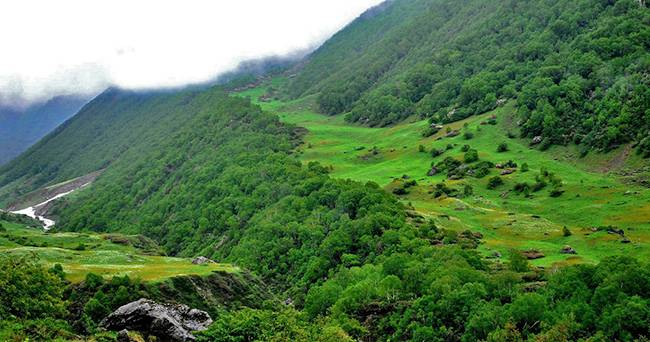
source: flickr.com/photos/himalayan-trails/3268638247
Located in West Himalaya – northern state of Uttarakhand, the Valley of Flowers has the most beautiful and breathtaking meadows with stunning landscape. The outstanding scenic beauty perfectly complements the mountain ranges making it a adventure sports and nature lover’s delight.
The Valley of Flowers National Park, with a diverse combination of flora and rare and endangered fauna, including Asiatic Black Bear, Snow Leopard, Musk Deer is part of the The Nanda Devi National Park, home to India’s second-highest peak. Area ncludes the rugged mountains of the Great Himalayas. The Reserve is a World Heritage site since 2004.
6) Sundarbans National Park
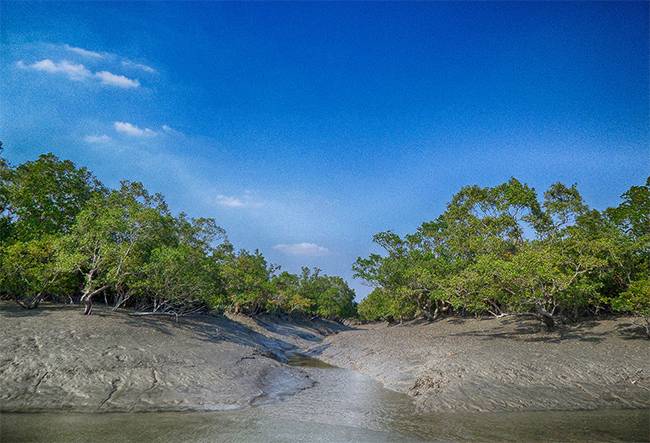
source: flickr.com/photos/bonjongol/14370388523
Sprawled across 10,000 sq km of land and water, across India and Bangladesh in the Ganga delta, Sunderbans cover the world’s largest area of mangrove forests. It is home to a number of rare and endangered animal species including tigers, aquatic mammals like, Gangetic dolphins, birds and reptiles such as salt-water crocodile and is also one of the largest reserves for the Royal Bengal Tiger.
The present Sundarbans National Park was declared as the core area of Sunderbans Tiger Reserve in 1973 and has been a World Heritage site since 1987.
7) Western Ghats
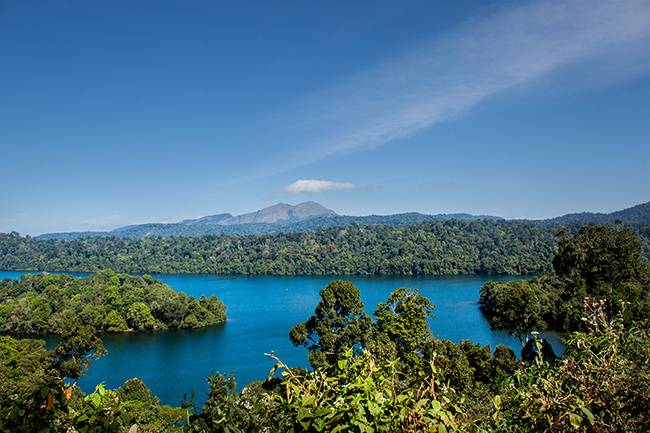
source: flickr.com/photos/navaneethkn/11597336545
The mountain chain that runs almost parallel to the western coast of India is even older than the Himalaya mountain range and was declared a World Heritage site in 2012. Also known as the Sahyadri mountain range, the Western Ghats represent biological diversity and is of importance because of the unique biophysical and ecological processes. Traversing through the six Indian states of Kerala, Tamil Nadu, Karnataka, Goa, Maharashtra and some parts of Gujarat, the Ghats with its high montane forest ecosystems also influence the Indian monsoon weather pattern. The Ghats also play a crucial role in regulating the region’s climate and water resources.
The area is one of the world’s ten “hottest biodiversity hotspots” and has over 5,000 species of flowering plants, 139 mammals, 500 birds and at least 325 globally threatened species occur in the Western Ghats.
Visit these places to connect with the nature itself and also to learn about endangered species of animals and birds.
The Impact of UNESCO Recognition on Conservation Efforts
The UNESCO designation brings global recognition and support for the conservation of these natural treasures. It encourages sustainable practices and fosters international cooperation in preserving the world’s natural heritage. Moreover, UNESCO World Heritage Sites often attract tourists, generating revenue that can be reinvested into conservation efforts and local communities.
Ecotourism Opportunities at UNESCO Natural World Heritage Sites
Visiting these UNESCO Natural World Heritage Sites offers travelers a chance to immerse themselves in pristine landscapes and encounter unique wildlife. However, it’s essential to engage in responsible tourism practices to minimize your environmental footprint and support local conservation initiatives. By choosing eco-friendly accommodations, respecting wildlife habitats, and following designated trails, travelers can contribute to the preservation of these fragile ecosystems.
In conclusion, India’s UNESCO Natural World Heritage Sites are not only treasures of biodiversity but also symbols of our shared responsibility to protect the planet’s natural heritage for future generations. By conserving these irreplaceable ecosystems, we can ensure a sustainable future for both people and nature.
FAQs on UNESCO Natural World Heritage Sites In India
- Why are UNESCO Natural World Heritage Sites important? UNESCO Natural World Heritage Sites are vital for biodiversity conservation and represent outstanding examples of Earth’s natural heritage.
- How many UNESCO Natural World Heritage Sites does India have? India currently boasts 39 UNESCO World Heritage Sites, including seven Natural World Heritage Sites.
- Are these sites open to the public? Yes, most of these sites are open to the public for tourism and conservation purposes, although certain restrictions may apply to protect sensitive habitats and species.
- What measures are being taken to conserve these sites? Conservation efforts include habitat restoration, anti-poaching patrols, community engagement, and sustainable tourism initiatives to ensure the long-term protection of these valuable ecosystems.
- How can I contribute to the conservation of UNESCO Natural World Heritage Sites? You can support conservation efforts by raising awareness, practicing responsible tourism, donating to conservation organizations, and advocating for policies that prioritize environmental protection.
–
This post was originally published on Trodly travel blog.
Featured image by Daniel Cooney

